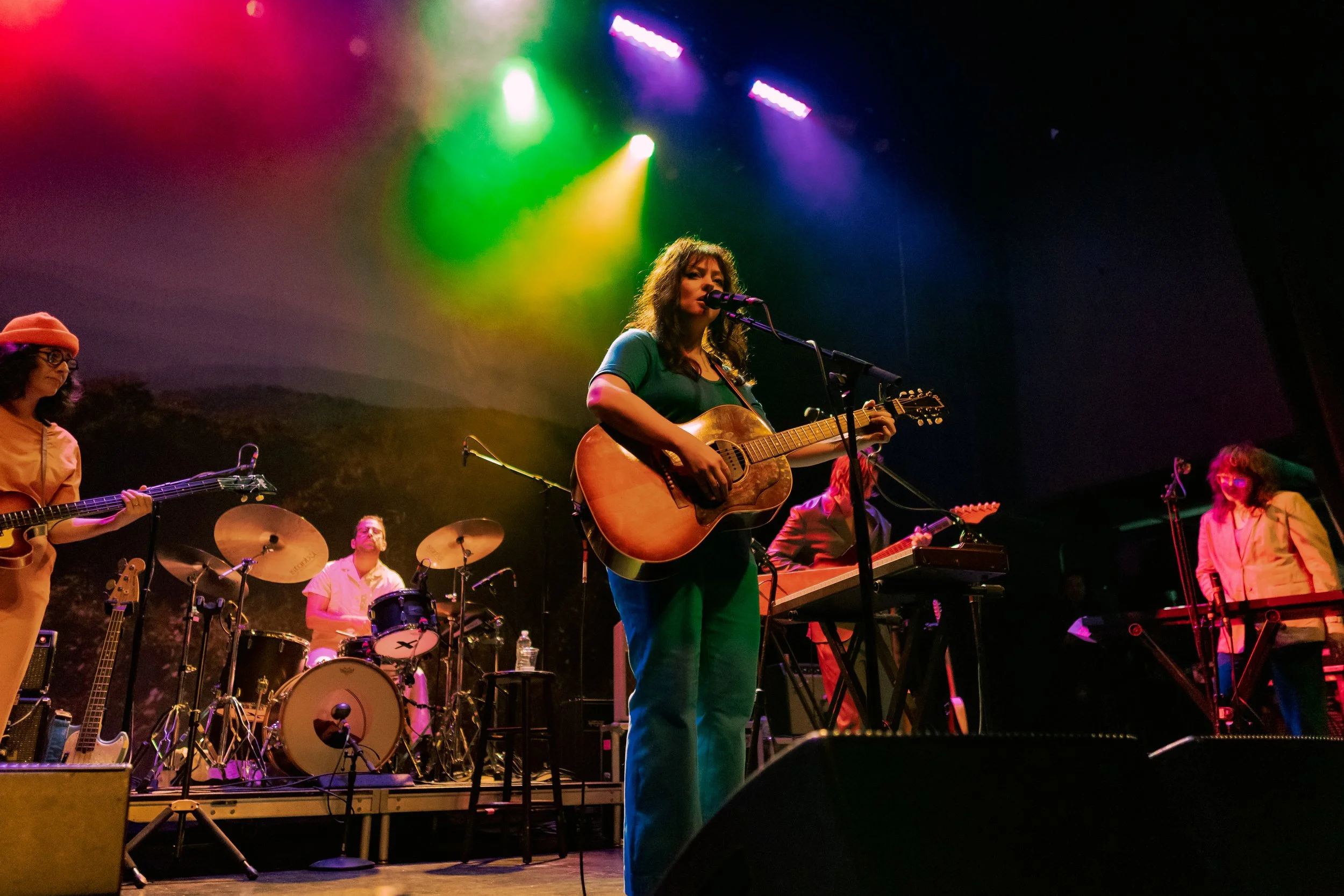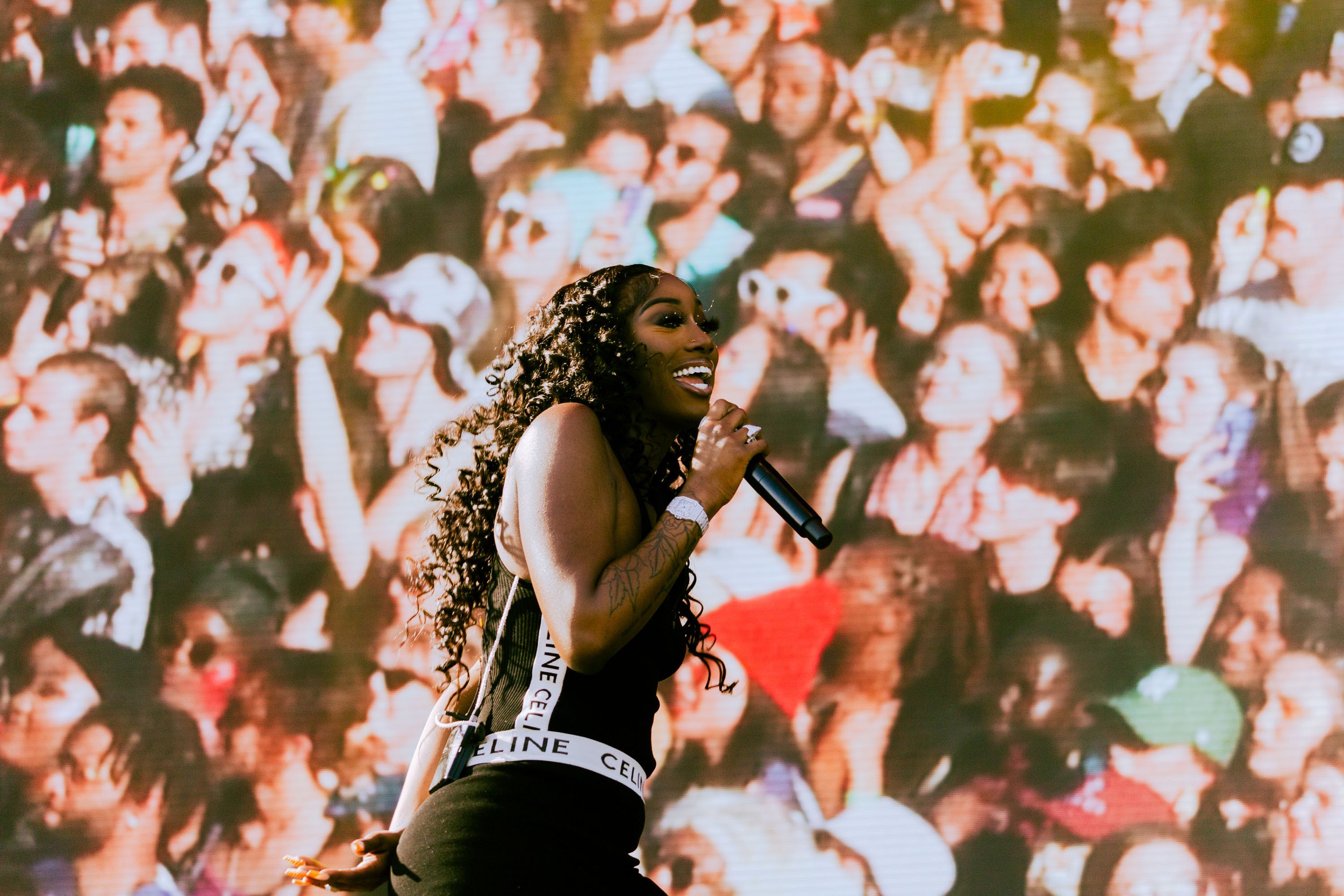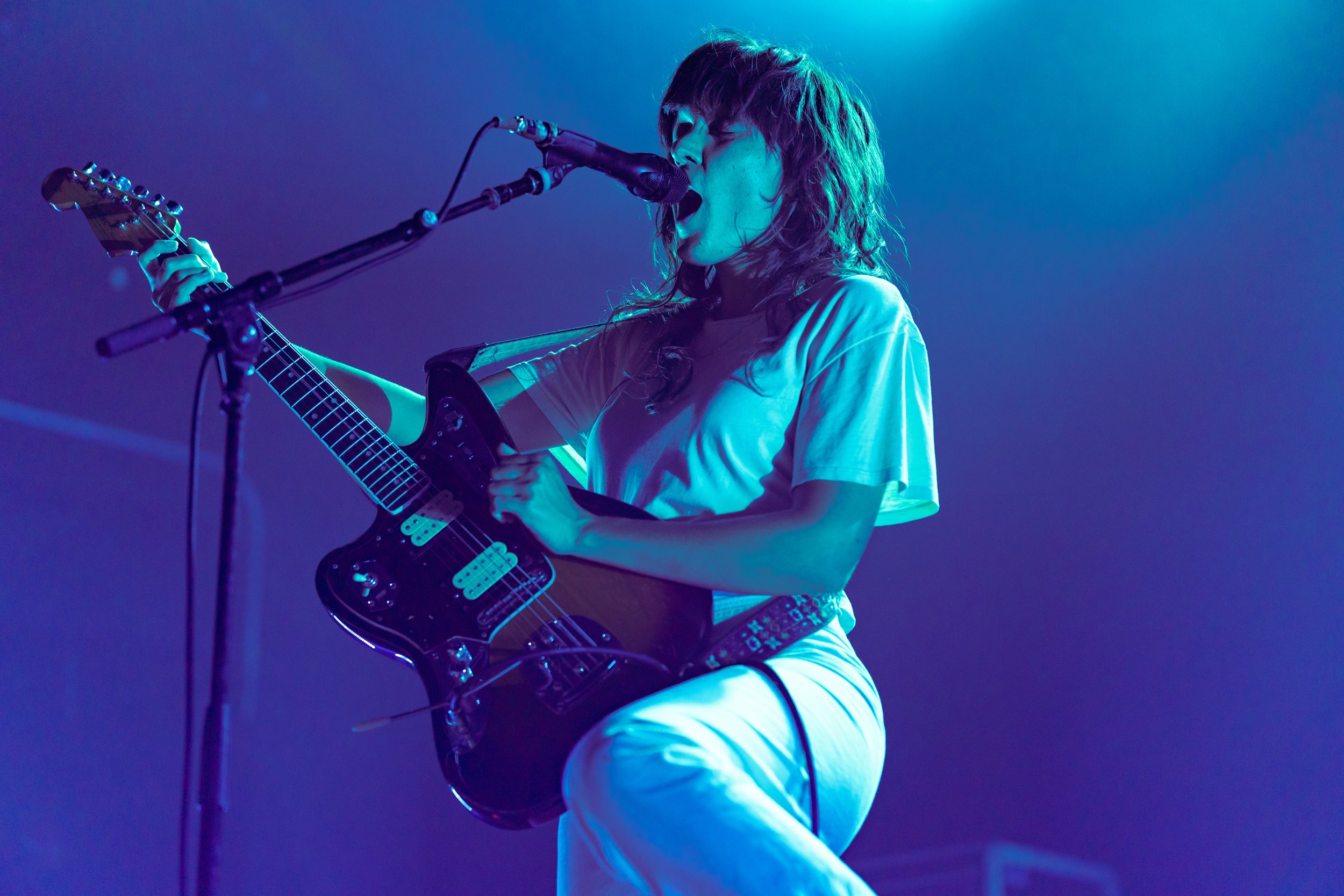Angel Olsen Shows Her Many Masks at the Joy Theater

Angel Olsen at The Joy Theater, by Victoria Conway
The indie-rock visionary brought her Big Time Tour to New Orleans and gave us a plurality of voices
Angel Olsen knows how to become your lover and obliterate your heart in the span of an evening. Her voice is the feeling of someone walking away without looking back. It shapeshifts and takes on many faces, masquerading its way to the most vulnerable part of you, before taking off the mask just to reveal a reflection of yourself. Whether she’s a portrait of those that have left imprints on our lives, or a part of us that longs to step into the light, Olsen’s darkest shadows are really just mirrors in which we see ourselves.
As soon as Olsen walked onto the Joy Theater stage two Saturdays ago, black eyeliner slicked into a thick cat eye and hair half mounted into a ‘60s bump, a guitar tech lifted a blonde acoustic guitar and placed it around her neck. Olsen is on the Big Time tour, performing her latest album that has been promoted as “not country, but not not country.” The Big Time Band, which features the addition of a cellist and violinist to Olsen’s indie-rock arrangement, all entered the stage wearing bright orange slacks, pale yellow jackets, and seafoam two pieces. When Olsen stood in the center, wearing a deep sky blue suit, it looked like she was standing in a California poppy field.
Big Time is sweeping and heartbreaking. It’s the kind of album you would take with you in solitude, hiking through mountains and rolling hills in an attempt to walk off an old part of yourself. Olsen wrote Big Time as a way to process the end of her first queer relationship and come to terms with the imprint queer love made on her life. While heartbreak is often a time we retreat from the rest of our lives, there isn’t a sense of losing oneself in Big Time. Olsen isn’t running away from herself, and she’s not trying to escape how she feels. Slide guitars may conjure images of lone star loneliness, of self-exile, but Olsen just needed the wide open space to belt over and set everything free. Swelling strings and hard-hitting drums took her to a place big enough to handle and carry the weight of her emotions.
Angel Olsen and her Big Time band, by Victoria Conway
Olsen has a lot of different voices inside of her. The high trill of a classic country singer from one moment, and the deep stormy vocals of a ‘60s rock singer like Nico to the next. Seeing Olsen live made it clear just how much she’s focused on mastering her voice and gaining full control over its colors, while still managing to let it exist as something wild, surreal, and never to be tamed. She faded into each different version with ease. As an audience member, you didn’t know which part of herself she was going to access until it was already happening, which created small moments of awe that everyone collectively experienced.
This, combined with her nonchalant stage presence, makes Olsen disorienting. You’re never quite getting a clear look at her, and she plays that up, fucking with you in a way that feels like only she could. “It’s a good thing you guys are here, because we’re going to play you a new song,” Olsen said as the crowd gasped with excitement, just for her to go into the driving force of “Shut Up Kiss Me,” arguably, her most famous song. It was a slight moment of embarrassment for everyone in the audience, like being teased by your crush. “Wow, that was pretty good for the first time,” she said to her bandmates as the guitar finished ringing out, the crowd laughing at themselves.
Angel Olsen onstage at the Joy, by Victoria Conway
You can’t ever tell when Olsen is telling you the truth, and it’s an effective tool for when she really wants to drop the hammer on you. Olsen wasn’t taking herself too seriously for the majority of the set, and she juxtaposed that casual attitude with the heavy lyrical content of her songs. She danced during her instrumental breaks, and often laughed during her darkest moments. The distance she created between us, between the woman who wrote these songs and the woman who was performing them right in front of us, built up to the moment she let everything fall. Olsen pushed us away so that when she pulled us close, we really felt it.
Olsen took off her white Fender Jaguar and grabbed the mic from the stand. She stepped back from the stage as the lights turned a ghostly blue, fog creeping into the atmosphere. As she began to sing, we felt it, the destabilization, the kind of loneliness that consumes and stirs something deep inside of you.
“I’m not looking for the answer / Or anything that lasts / I just want to see some beauty / Try and understand,” Olsen sang in “Chance (Forever Love),” her voice curling around every word, droning and shaking with conviction. A girl standing next to me had her hands in her pockets while a river of tears ran down her cheeks, and in a way, it was a reflection of Olsen herself. There’s something to be said about the casual demeanor Olsen maintains as an audience watches her experience something tragic on stage. The calm in Olsen’s eyes as she experienced a storm inside of her was not indifference, or disconnection from one’s self. It was the feeling that none of it was a surprise at all.
Olsen makes harsh realities gorgeous. She soundtracks the endings that are meaningless, and the moments that feel endless. Her music touches a soft part of ourselves that is hard to access, but is always there, a thin glimmering line inside us all.








